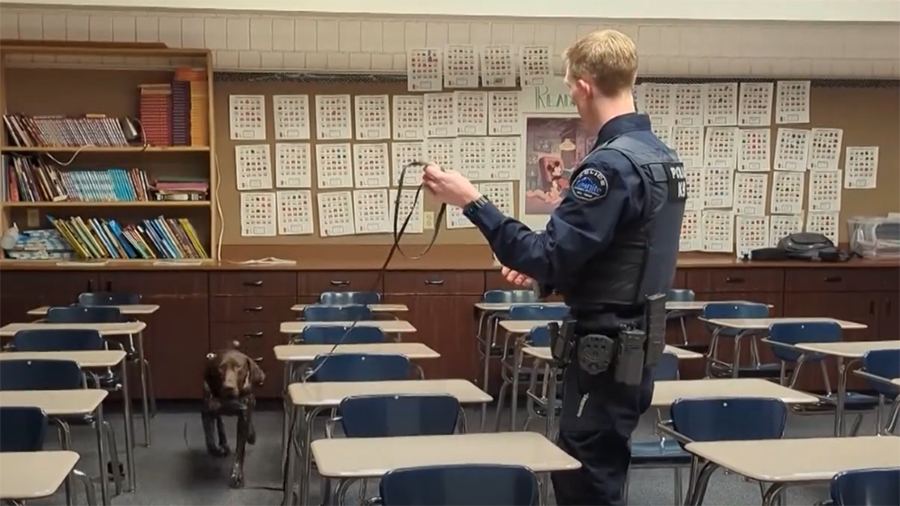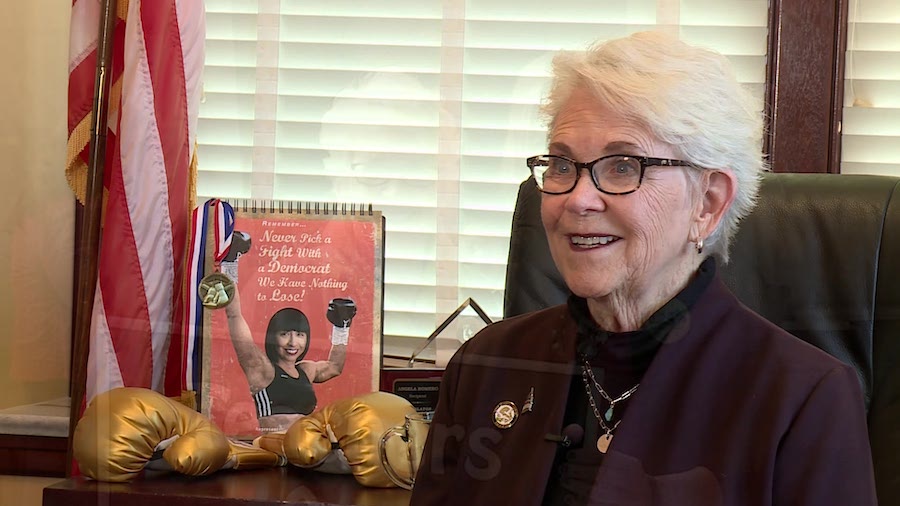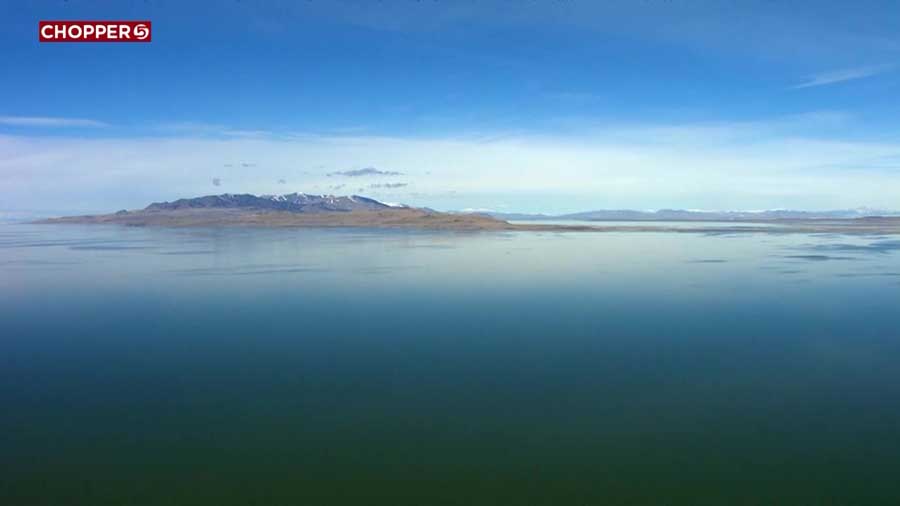KSL+: The division surrounding Bear’s Ears
Oct 14, 2021, 4:31 PM | Updated: 4:31 pm
When we got here, it was not a national monument. And this afternoon it’s now Bear’s Ears National Monument
Matt Rascon: This week on KSL+, a proclamation to fully restore the boundaries of Bear’s Ears National Monument and a years-long land dispute in southern Utah. President Joe Biden expanding Bear’s Ears and Grand Staircase Escalante national monuments. Drawing praise from tribal leaders and criticism from some residents and state leaders and delegates.
Brad Wilson: It’s not good for the people that live in that area. It’s not good for people that want to recreate in that area. It’s not good for the land in particular,
Matt Rascon: But why the back and forth over the years. And what is this latest decision mean for the land and people moving forward? I’m Matt Rascon and this is KSL+.
In 1996, President Bill Clinton designated Grand Staircase Escalante a National Monument. In other words, offering the land protection. In 2016 President Barack Obama did the same to Bear’s Ears. But just one year later, in 2017, President Donald Trump downsized the two monuments, carving out about 85% of Bear’s Ears, and cutting Grand Staircase in half.
Stephen Bloch: These are the crown jewels of the lands managed by the Interior Department in the United States.
Matt Rascon: Their response was immediate opposition and lawsuits followed, coupled with applause from many in Utah, not unlike the scene we see playing out today.
This is a debate with a lot of stakeholders, a lot of different reasons why people do or do not support it, and a lot of ideas about an alternative. So let’s take a look at the issues.
First, it’s become a political issue in the eyes of many leaders in Utah’s state and federal government. This is an act of federal overreach, Utah House Speaker Brad Wilson,
Brad Wilson: For a variety of reasons, a legislative solution would be better. I mean, we would be able to get everyone to agree to what makes sense for the area with local input. But more importantly, or as important, we would also be able to establish the funding required to manage the lands. We would be able to come to agreements on who is going to take which areas of responsibility, we would have clarity for the long term, and we would know what the plan is going to be for the long term. But right now, we’re gonna just see this go back and forth as administration’s change most likely, and it’s not, it’s not going to be good for anyone.
Matt Rascon: 13 Native American tribes can trace their lineage to this area, while many white residents in the area can claim their ancestors settled on the land. Either way, many believe this is a decision that should be made by the people with actual ties to the land, and not politicians across the country. Others are concerned the designation was made through executive order, not legislative action.
Brad Wilson: Well, it’s probably a better question for our federal delegation. We have been in conversations with them, I think they’re anxious and would like to try to find the solution that Congress can work through. But you do have to have a willing partner in the White House as well. And so we we’ve got some work, some work to do there.
Matt Rascon: But for three years, state and federal leaders went back and forth on representative Rob Bishop’s bill called the Public Lands Initiative, which designated basically the same area to be federally protected. It couldn’t get passed through Congress and activists asked President Obama to sign the executive order as a last-ditch effort to save the land. One concern with executive orders is that it will get reversed with every new administration, whereas legislative decision is more set in stone. Here’s what the Utah Solicitor General had to say about it.
Melissa Holyoak: For the last 10 months, the state has been asking the president to work with the state to come up with a legislative solution. So this has now been five presidents 3 decades, it would be great to do that. And in particularly because with a legislative solution comes funding. And right now President Biden is inviting the world to come to these, but they don’t have the infrastructure, the law enforcement to enforce the already many protections. There are half a dozen federal statutes that protect these lands already in these areas already.
Matt Rascon: But Stephen Bloch of the Southern Utah Wilderness Alliance says there is history to support this designation.
Stephen Bloch: National monuments were always intended to be permanent, durable protections for the land. I think the right way to view what the Trump administration did what the President did is an aberration. And I think history will come down on the side of preserving and protecting these lands. It has time and time again in Utah. You don’t hear Utah politician saying that places like Zion National Park or Capitol Reef, or Arches shouldn’t have been national monuments first, right? We’re all incredibly grateful for the protections. And it’s really the same here, conserving and protecting these lands is the right choice for history. You know, we’re not going to look back and say that a decision to preserve these places was a mistake. Time and time again, in Utah and around the West, we’ve seen that when presidents act use their authority under the Antiquities Act, that that was the right decision. We hear a lot, I think, from the governor and from the delegation, some hand wringing that they wish the President had waited, that there had been a legislative solution. That really rings hollow. They were never saying that over the past four years after President Trump unlawfully dismantled the monuments. They weren’t clamoring for legislative solution. They were very happy with that unlawful status quo. And if they were serious about it, they would have acted then. Of course, it’s always Congress’s prerogative to act and protect these places. And we’d be very interested in having that conversation if they’re serious about it.
Matt Rascon: Next, it’s an economic issue. Two-thirds of Utah is already considered public land, meaning the state is limited in where it can collect property taxes. The area of Bear’s Ears was already federally owned. But some worry this designation will come with environmental regulations that will impact grazing, timber and mining. For example, nearby Blanding has the country’s only uranium mine, and employs about 150 people. One study found the areas around Grand Staircase saw a 38% jump in job growth in the years after it became a monument as more tourists came to the area. But those hospitality jobs are usually lower paying and only available part of the year, in contrast to industry jobs. But that leads us to the final issue. Protecting the land and its cultural significance
Mary Benally: As indigenous person, land and whatever is on that the plants, the animals, those are more precious than anything else,
Matt Rascon: Mary Benally is a board member of Utah Diné Bikéyah, a group that works to protect and preserve Bear’s Ears and other cultural uses of public lands by tribes.
Mary Benally: This piece of land, the Bear’s Ears national monument is 1.3 million, some odd numbers now, it’s a small piece of land. And we don’t want any development. We don’t want any mining, we don’t want any, any kind of obstruction. There’s other lands that already happened on. And they can just do it over there. But the land is a sacred place for us. We want to keep this land in its pristine stage, as it has always been, the indigenous people migrated through here, all the Colorado basin tribes, the Hopis, the Utes, the Navajos, and others. And our history is here, our history is here, we still have the structures, we still have the petroglyphs, and you see some other Navajo resident residential structure still in place. And there’s a history and we want to keep this land as it is. We don’t want any change
Matt Rascon: Some worry that more tourists will actually cause harm to the more than 100,000 archaeological sites in the area with not enough staff to monitor the area and new interest. But again, Stephen Bloch of the Southern Utah Wilderness Alliance feels this is the best way to protect the land.
Stephen Bloch: I think we’ve seen in both monuments, especially in Bear’s Ears, a real uptick in visitation. And it’s going to be essential. And we’re thankful that the administration said it’s going to prioritize working with tribes, state, local leaders to make sure that when people visit this area, they’re respectful, that there’s stewardship for the sites. So there is context and understanding about what they’re seeing. And what you’re not allowed to do. I mean, these sites, the sacred sites and Bear’s Ears National Monument, for example, 1000s of years old, and that damage is real. And so we’re grateful that the that the administration is prioritizing the conservation and stewardship of those places for the people that were there first.
This designation means protecting areas of the land that are sacred to them. With this designation, two federal agencies, and five Native American tribes who have historical claims to the land will manage it.
Matt Rascon: Kenneth Maryboy is a former Navajo Nation council delegate, and former San Juan county commissioner.
Kenneth Maryboy: You know, a lot of people from the outside are looking at the areas for mining and oil, and all different things, those may be good. But if we take Mother Earth away, we don’t get a second chance. Nobody’s gonna say, Oh, you guys screwed up this show Earth and so therefore we’ll give you another one. Don’t worry about it. There’s no way that’s going to happen. We have to live together to preserve and to try to save what we have to continue for the generation to come.
Matt Rascon: According to the Bear’s Ears Coalition, it’s not just about protecting the history of the land, but also the future. The coalition says the Navajo and Ute people often go to this area to collect food, herbs and medicines, wood for heating and other ceremonial purposes. Those practices keep them connected physically and spiritually to their ancestors. They believe they are the best stewards of the land, using traditional practices to sustain it for future use. The battle between economic interests, protecting culturally significant land, and environmental issues is of course, not unique to Utah. We’re seeing this play out with the Keystone pipeline, which will run through sacred Native American land and created a lot of environmental concerns.
This is an issue that isn’t likely to go away soon. Thanks for joining us here on KSL+, I’m Matt Rascon, and we’ll see you again next week.












